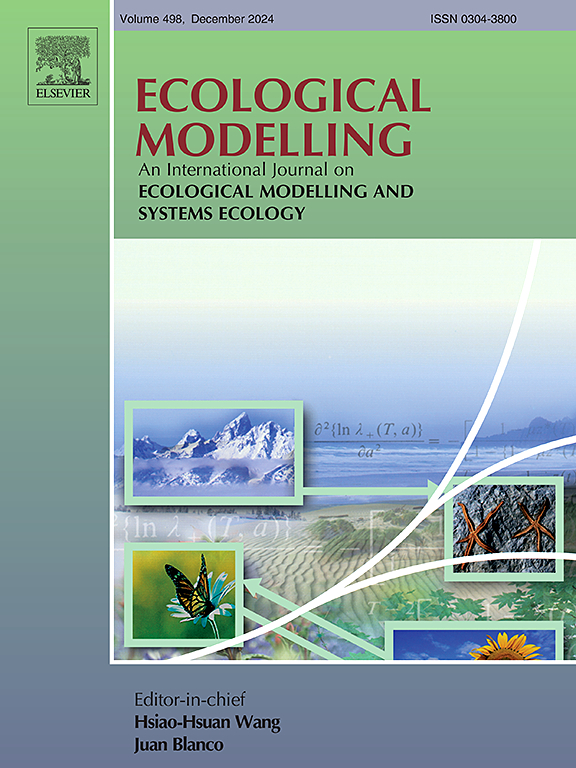Evaluating comprehensive watershed management sustainability based on the emergy ecological footprint model: A case study of Hainan Island, China
IF 2.6
3区 环境科学与生态学
Q2 ECOLOGY
引用次数: 0
Abstract
Comprehensive watershed management, which realizes the protection, optimal utilization and ecological restoration of regional soil and water resources is the primary method for controlling soil and water loss in China. However, the deployment of soil erosion control measures requires many resources that increase the environmental load and thus impact ecosystem sustainability. In this study, an emergy ecological footprint model based on emergy theory was developed, and to assess the sustainability of a comprehensive watershed management ecosystem on Hainan Island, China. The results show that: (1) Among the input resources, the emergy ecological footprint (EEF) of machinery was the largest, at 3213.89 hm²; among the construction resources, high-strength materials such as stone, concrete and steel bars were mainly used, and the EEF was greater than 60 %. (2) The primary sources of EEF for comprehensive watershed management were engineering measures project (8554.33 hm²), at >92 %. Gulley erosion control (GEC) was the largest source, followed by slope water works (SWW) and field roads (FR). (3) Renewable resources provide the main ecological carrying capacity (ECC) of the comprehensive watershed management ecosystem; however, the sum of ecological and economic benefit ECCs is 23.92 %. (4) Initially, the ecological profit and loss of the comprehensive watershed management ecosystem (CWME) was −7099.81 hm², and the ecological footprint intensity was 4.28, indicating an ecological deficit, which is not conducive to sustainable development. However, an ecological turning point occurred in 2025: the cumulative ECC exceeded the cumulative EEF, at which point CWME achieved an ecological surplus. Therefore, although the preconstruction period generates considerable ecological pressure, overall, comprehensive watershed management supports sustainable development of the ecological environment. This study provides new trade-off ideas for ecological restoration projects such as comprehensive watershed management.
基于能量生态足迹模型的流域综合管理可持续性评价——以海南岛为例
流域综合治理是实现区域水土资源保护、优化利用和生态修复的主要手段,是中国控制水土流失的主要手段。然而,水土流失防治措施的部署需要大量资源,增加了环境负荷,从而影响生态系统的可持续性。基于能值理论,建立了能值生态足迹模型,并对海南岛流域综合管理生态系统的可持续性进行了评价。结果表明:(1)在投入资源中,机械的能量生态足迹(EEF)最大,为3213.89 hm²;建筑资源中以石材、混凝土、钢筋等高强度材料为主,EEF大于60%。(2)流域综合治理EEF的主要来源为工程措施项目(8554.33 hm²),占92%;沟沟侵蚀控制(GEC)是最大的来源,其次是坡面水厂(SWW)和田间道路(FR)。(3)再生资源提供了流域综合治理生态系统的主要生态承载力(ECC);生态效益和经济效益的ECCs占23.92%。④流域综合治理生态系统(CWME)初始生态盈亏为- 7099.81 hm²,生态足迹强度为4.28,处于生态赤字状态,不利于可持续发展。然而,2025年出现了生态转折点:累积ECC超过累积EEF,此时CWME实现了生态盈余。因此,虽然建设前期会产生相当大的生态压力,但总体而言,流域综合治理支持生态环境的可持续发展。该研究为流域综合治理等生态恢复工程提供了新的权衡思路。
本文章由计算机程序翻译,如有差异,请以英文原文为准。
求助全文
约1分钟内获得全文
求助全文
来源期刊

Ecological Modelling
环境科学-生态学
CiteScore
5.60
自引率
6.50%
发文量
259
审稿时长
69 days
期刊介绍:
The journal is concerned with the use of mathematical models and systems analysis for the description of ecological processes and for the sustainable management of resources. Human activity and well-being are dependent on and integrated with the functioning of ecosystems and the services they provide. We aim to understand these basic ecosystem functions using mathematical and conceptual modelling, systems analysis, thermodynamics, computer simulations, and ecological theory. This leads to a preference for process-based models embedded in theory with explicit causative agents as opposed to strictly statistical or correlative descriptions. These modelling methods can be applied to a wide spectrum of issues ranging from basic ecology to human ecology to socio-ecological systems. The journal welcomes research articles, short communications, review articles, letters to the editor, book reviews, and other communications. The journal also supports the activities of the [International Society of Ecological Modelling (ISEM)](http://www.isemna.org/).
 求助内容:
求助内容: 应助结果提醒方式:
应助结果提醒方式:


